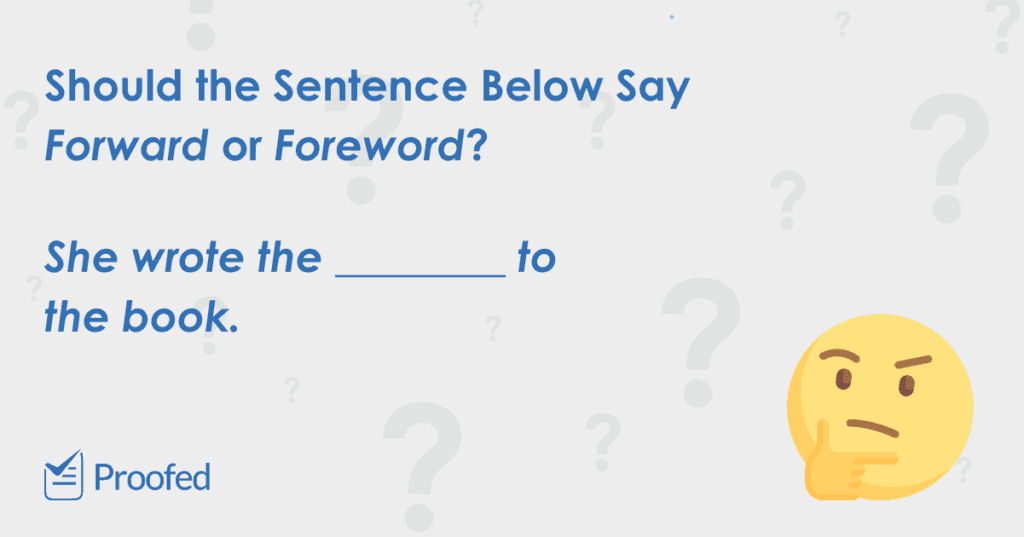“Forward” and “foreword” look similar on paper. They may even sound similar when spoken aloud. But these terms are very different in practice, so it’s important not to mix them up in writing! In this post, then, we’re looking at how to use the words “forward” and “foreword” correctly.
Forward (Toward the Front)
“Forward” has several definitions, but the most common is to mean “in the direction in front of you.” We can use it as an adverb or an adjective in this sense. For instance, we could use it in relation to movement:
I walked forward until I reached the ledge.
When the brake is released, the car moves in a forward direction.
More figuratively, we can use “forward” in relation to time or progress:
I am looking forward to the weekend.
With this appointment, we’ve made a big step forward in our plans.
Other definitions include as an adjective meaning “confident,” often overly so:
Was it too forward to ask them to dinner when we’ve only met once?
It can also be a verb meaning “send a message received to a new recipient”:
Find this useful?
Subscribe to our newsletter and get writing tips from our editors straight to your inbox.
We forwarded your mail this morning.
Or it can be a noun meaning “an attacking player in a team sport”:
The forward was on great form, scoring thirty points.
This might be a lot to take in! The most important definition, though, is the sense of moving forward in space, time, or a process.
Foreword (An Introduction)
A much simpler term, “foreword” is a noun that refers to a short introductory section in a book. The idea is to introduce the reader to the author and the book, so it is usually written by someone with a personal connection to the author or work (but not by the main author themselves):
I asked my old tutor to write the foreword to my first book.
An introductory passage written by the author is usually known as a preface.
Summary: Forward or Foreword?
Although they sound similar, these terms have very different meanings:
- Forward is typically an adverb or adjective meaning “in the direction in front of you.” It is usually used in relation to space, time, or progress.
- A foreword is an introduction to a book, usually by someone with a connection to the work or author (but not by the main author themselves).
The key here is that “foreword” only has one meaning. It can also help to remember that the foreword comes before the other words in a book! But if you’d like any more help ensuring your writing is error free at all times, why not submit a document for proofreading today?



